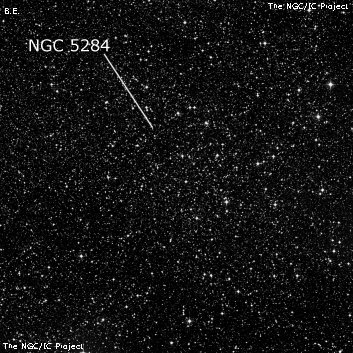
John Herschel discovered NGC 5284 = h3532 on 7 Jun 1837 and recorded a "Cl class VIII; L; v rich; loosely sc; stars 7,8,...16m; it is an outlier of the milky way, but very rich and insulated." His position corresponds with the brightest mag 9 star.
Harold Corwin notes "there is a Milky Way star cloud, about 30' by 20', centered about 45 seconds of time following JH's position." ESO states "Not found" and the RNGC description reads "NOCL?"
400/500mm - 18" (10/16/17 - OzSky): at 79x (62' field); this large Milky Way field (demonstrated to be a random collection of stars) is located ~25' ENE of a wide, bright double star (DUN 142 = 6.5/7.6 at 33"). It roughly extends 25' in diameter and appears rectangular in outline, though is not detached in the wider field. The group contains a large number of mag 11.5-13 stars. A fairly well defined 20' string of stars oriented NW-SE appears to define the southern boundary and runs along the line from DUN 142 and mag 7.3 HD 120042 to the southeast. The 25' region to the north of this string contains scores of visible stars but too difficult to count. NGC 5284 was not impressive or stood out though was somewhat richer than the region directly to the east.
Notes by Steve Gottlieb